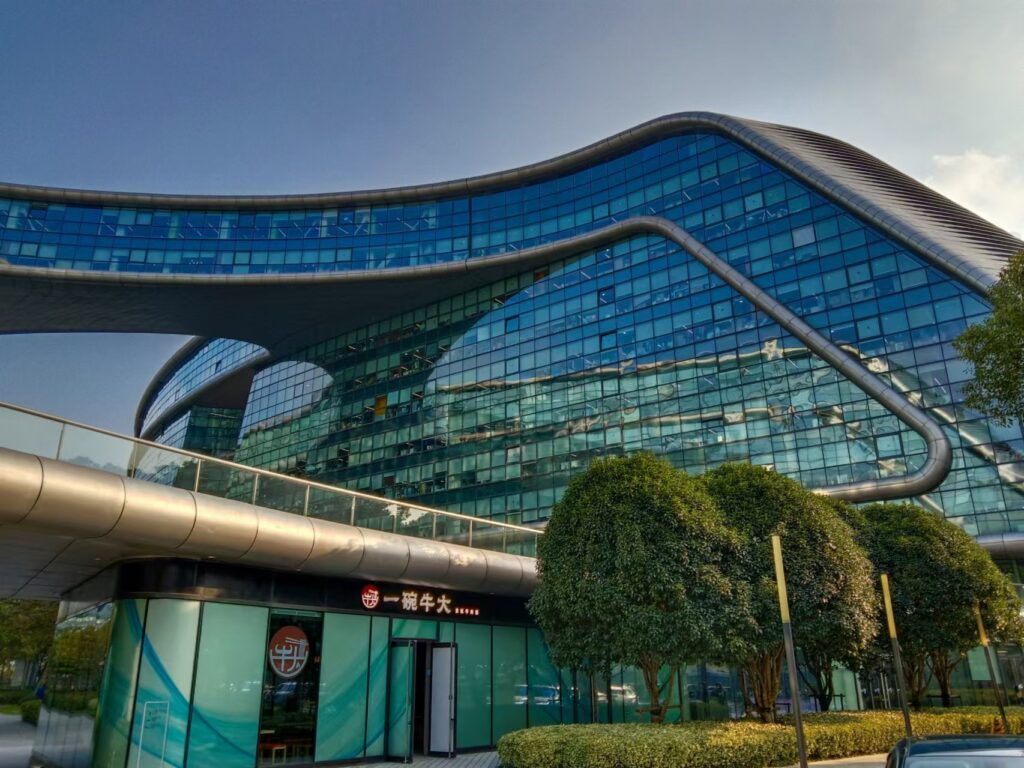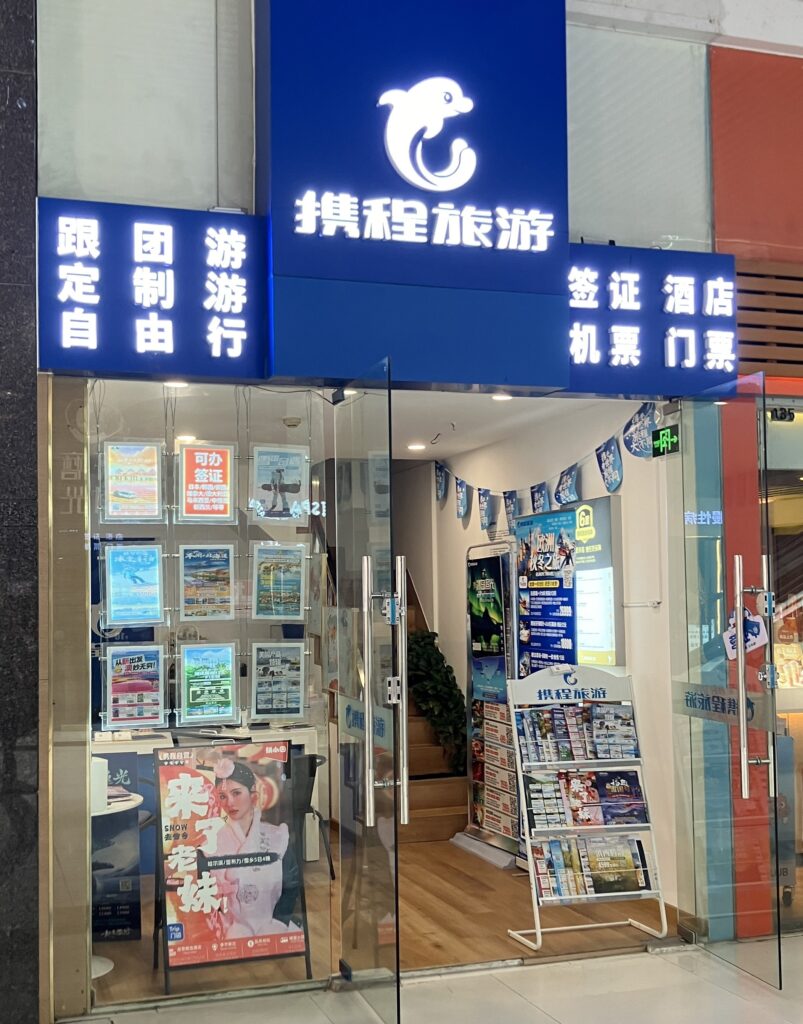I recently visited the Shanghai headquarters of Trip.com (which also includes the brands Ctrip, Qunar and Skyscanner). It wasn’t a formal visit. Just some conversations.
And it was great.
Trip is on my short list of really compelling digital businesses that are off the radar (somewhat). Here is my summary:
- I like consolidated travel services, with increasing services, experiences, and personalization over time. Including content.
- I like its regional and increasingly global network effects (mostly from hotels).
- I like its attractive unit economics, as it is mostly a digital (not human) operation.
- I like its global growth trajectory. Trip.com can expand to new customer bases internationally. Plus, travel / hospitality spending should rise linearly with rising disposable income in China.
- It isn’t exposed to significant changing customer habits, tech disruption or government regulation.
My major concerns are:
- Low frequency of usage and customer engagement. Customer just don’t buy plane tickets that often. Although the shift into content and experiences may be solving this (somewhat).
- Potential intermediation by other digital players that are closer to customers. Especially search engines, social networks, and attention-based businesses like TikTok and WeChat.
- Being a stand-alone travel service competing with larger digital giants with big suites of services (such as Meituan and Alibaba).
Those were my concerns and the reason I wanted to visit the company. Plus, the Trip headquarters has a cool design, which resembles high speed trains.


Let me go through the basics of the business first. And why I like it. In Part 2, I’ll go into my take-aways from the visit.
How Trip.com Wins with Travelers (i.e., Buyers)
Founded in 1999, Trip today is an “all in one platform” offering a growing suite of travel services. Plus, it is increasingly getting into travel content sharing. As an online travel agency, it is more developed businesses like Expedia, Booking.com and Airbnb. I consider it the leader in terms of OTA innovation.
That is not surprising. Ecommerce businesses based in China are forced to innovate faster due to the more competitive environment. If you had Alibaba and Meituan going after your business, you would be running fast too.
Here’s how they describe themselves (from the 2023 annual report). This is worth reading twice.

This is a marketplace platform so it need to serve two user groups: travelers (i.e., buyers) and ecosystem partners (i.e., the service providers).
From the excerpt, their value proposition to travelers is:
- To explore travel
- To get inspired
- To make informed and cost-effective travel bookings
- To enjoy hassle-free, on the go support
- To share travel experiences
They want to provide a personalized, convenient, enjoyable, and inspirational travel experience.
That’s interesting language. You can pretty much see their KPIs in their language. There is definitely a shift from the traditional focus on convenience and hassle-free bookings to enjoyment and inspiration. And personalization.
Since 2018, they have been rolling out content sharing. This includes:
- User Generated Content (UGC).
- Professional Generated Content (PGC). This appears to be mostly from Trip itself.
- Professional User Generated Content (pUGC). This includes KOLs, travel bloggers, and content from ecosystem partners.
The idea is to consolidate and aggregate travel content. Helping travelers by:
- Inspiring new travel ideas. This is important. More on this later.
- Making informed decisions.
- Sharing travel experiences.
I prefer the description from the AR competition section, which lists the following main factors for competition between “travel aggregators”.
- Brand recognition
- Depth and breadth of travel offerings
- Price competitiveness
- User support and satisfaction
For all the talk, these are still the main factors that matter. In Part 2, I’ll talk about how more offerings and more promotions are still the big levers with buyers. Not content, inspiration and enjoyment.
How Trip.com Wins with Ecosystem Partners (i.e., Service Providers)
This is a marketplace platform for services so you have to win on the supply side as well. And them balance that with what you are offering to buyers. If you find the magic equation that makes both buyers and sellers happy, you enable interactions and transactions at large scale.
Their main services are:
- Accommodations reservations
- Transportation tickets
- Package tours
- In-destination activities
So, their main supply-side users are:
- Hotels and other accommodations. They have 1.7M listings. Accommodations are 40% of their orders.
- Flights. They have 600 partners. This is 60% of their orders
- Car rental operators.
- Bus, train, and ferry operators.
- Other travel agencies. Note: There are +90,000 in this and numbers 3-4.
From their annual report, their value to them is:
- Access to global user base. This is obviously the biggest thing. You aggregate demand and the suppliers all come running. They really have no choice.
- Engagement with users in real time. Virtually every product and service provider is struggling to get the attention and engagement of buyers. It’s critical for customer acquisition. And for getting customer data that informs your decision-making.
- Tech solutions. This is a growing list of services. GenAI is the new thing here.
- Establishing a presence online. This seems pretty outdated. Like something mentioned in 2005. But maybe this makes sense in some markets still.
So, you can see they are well positioned. As they continue to grow internationally, their customer base is going to increase. Which is their big value to providers.
They also spend about 27% of revenue on product development. So, they will keep advancing the tech solutions year after year.
***
Finally, it is worth noting that the competitive landscape for OTA is changing. Here is who Trip.com lists as their competitors (mostly in China).
- OTA and offline travel agencies
- Content platforms that are entering the space. Think TikTok.
- Social networks that are entering the space. Think Facebook and WeChat.
- Hotels and airlines forming alliances and going direct.
2 and 3 are interesting. Ecommerce (both products and services) is increasingly merging with content and social. It’s not surprising that big video and social media businesses are starting to offer travel services. They are already doing travel content. So, Trip has been pretty smart about moving from services into content in response.
I think the last one (alliances) is particularly interesting. If you’re building a global network of airline routes and hotels, you can do that (somewhat) with alliances. A lot of the airlines have been building global alliances. This raises an interesting question:
How do the advantages of scale different when done internally vs. by alliances?
I’ve been thinking about this question.
Last Point: The Financials Look Good
Trip.com is a digital platform. Which can mean great competitive advantages and great unit economics. That scale cheaply.
That is mostly the case with Trip.com. Here are their financials.

Yes, there was a big jump in revenue in 2023. But this was mostly a big post-Covid rebound in revenue. It was 44B RMB in 2023. But it was about 35B RMB prior to Covid. So, there is growth. But not stratospheric.
And we can see pretty great unit economics.
- 82% gross profit, which has been stable.
- Sales marketing at 20% of revenue. Not horrible.
- Product development at 27% of revenue. That is great. They are leaning into new products and services.
- Operating profit is 25%. Great
Here is the breakdown of revenue. It’s pretty evenly split between accommodations and transportation.

Note the comment at the bottom about operating as an agent (i.e., no ownership). That’s great for the unit economics.
Finally, there is the cash flow statement. Which is great.

This thing is basically a cash machine. With a good runway for continued global growth. Ctrip is mostly a China / Asia business today. But Asia travel is increasing. And travel tends to become global.
Travel has periodic shocks from things like disease, wars, and weather. But I consider these buying opportunities. The long-term trajectory is pretty stable and linear.
In terms of unit economics, there are two aspects to Trip’s operating activities that concern me.
- Customer service and the call centers require lots of FTEs. Unfortunately, you need to offer 24/7 customer service in travel. That is an opportunity to build a barrier to entry and to outperform competitors. But it also means lots of bodies. Ctrip currently has 9 centers in Asia (which are cheaper than the EU and USA). And 1 center in Edinburgh. Note: In 2023, Trip had 30,000 total employees.
- Ctrip has opened 5,700 offline stores in China. These are for travel consultations, local support, and assistance. I’m not sure if these are about customer service or about growing the business in lower tier Chinese cities. And it’s unclear how much these actually cost. They may be done mostly by travel partners.

***
That’s it for Part 1. In Part 2, I’ll go into my take-aways from my visit.
Cheers, Jeff
Here are my conclusions again:
-
- I like consolidated travel services, with increasing services, experiences, and personalization over time. Including content.
- I like its regional and increasingly global network effects (mostly from hotels).
- I like its attractive unit economics, as it is mostly a digital (not human) operation.
- I like its global growth trajectory. Trip.com can expand to new customer bases internationally. Plus, travel / hospitality spending should rise linearly with rising disposable income in China.
- It isn’t exposed to significant changing customer habits, tech disruption or government regulation.
My big concerns have always been:
- Low frequency of usage and customer engagement. Customer just don’t buy plane tickets that often. Although the shift into content and experiences may be solving this (somewhat).
- Potential intermediation by other digital players that are closer to customers. Especially search engines, social networks, and attention-based businesses like TikTok and WeChat.
- Being a stand-alone travel service competing with larger digital giants with big suites of services (such as Meituan and Alibaba).
- 3 Lessons from My Visit to Trip.com (Tech Strategy – Podcast 234)
- 4 Lessons from My Visit to Trip.com (2 of 2) (Tech Strategy)
——-
Related articles:
- GenAI Playbook (Step 3): How to Build Barriers to Entry with Intelligence Capabilities (9 of 10) (Tech Strategy)
- Why ChatGPT and Generative AI Are a Mortal Threat to Disney, Netflix and Most Hollywood Studios (Tech Strategy – Podcast 150)
From the Concept Library, concepts for this article are:4
- Marketplace Platform
From the Company Library, companies for this article are:
- Trip.com / Ctrip / Qunar / Skyscanner
——–
I am a consultant and keynote speaker on how to accelerate growth with improving customer experiences (CX) and digital moats.
I am a partner at TechMoat Consulting, a consulting firm specialized in how to increase growth with improved customer experiences (CX), personalization and other types of customer value. Get in touch here.
I am also author of the Moats and Marathons book series, a framework for building and measuring competitive advantages in digital businesses.
This content (articles, podcasts, website info) is not investment, legal or tax advice. The information and opinions from me and any guests may be incorrect. The numbers and information may be wrong. The views expressed may no longer be relevant or accurate. This is not investment advice. Investing is risky. Do your own research.
